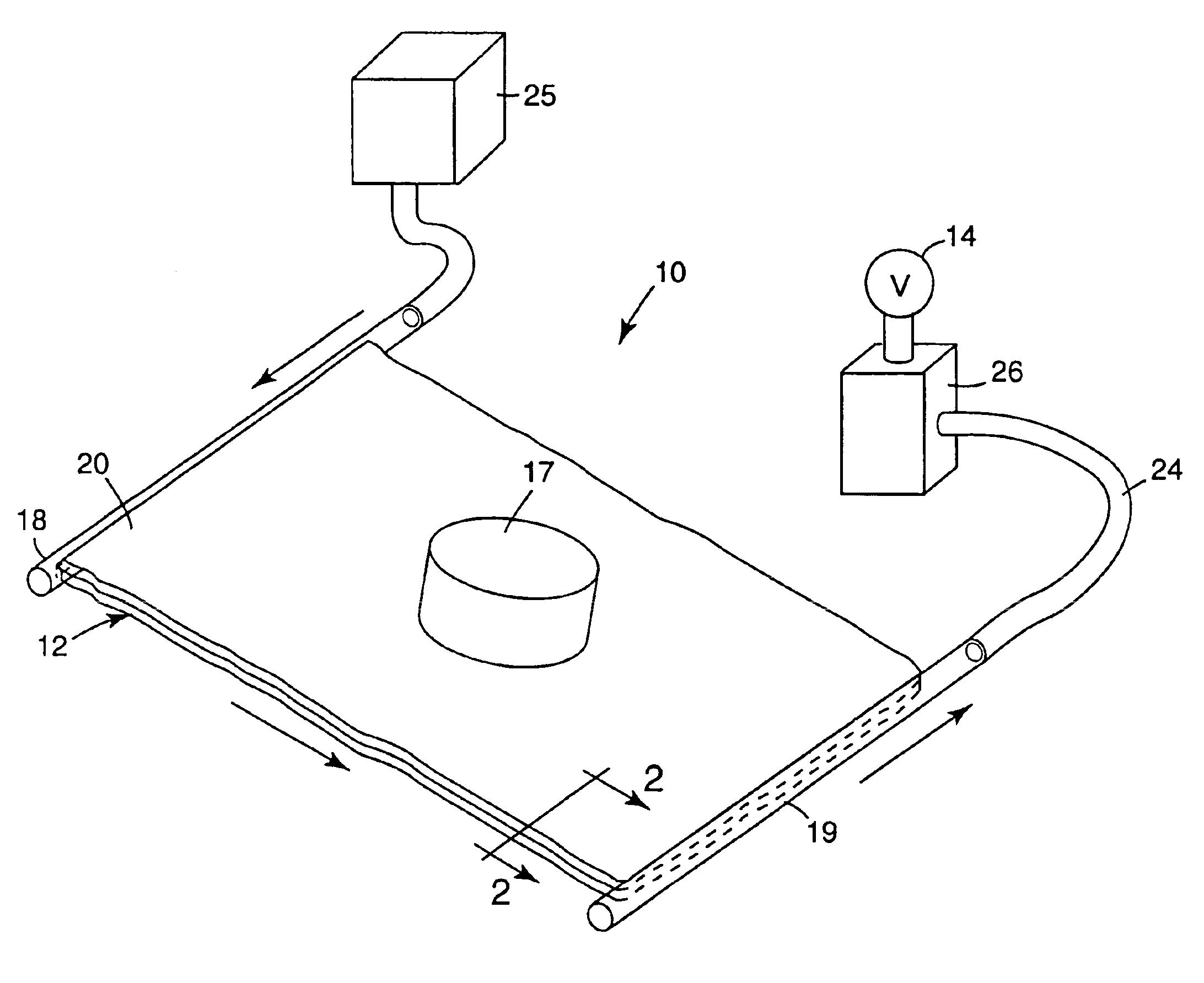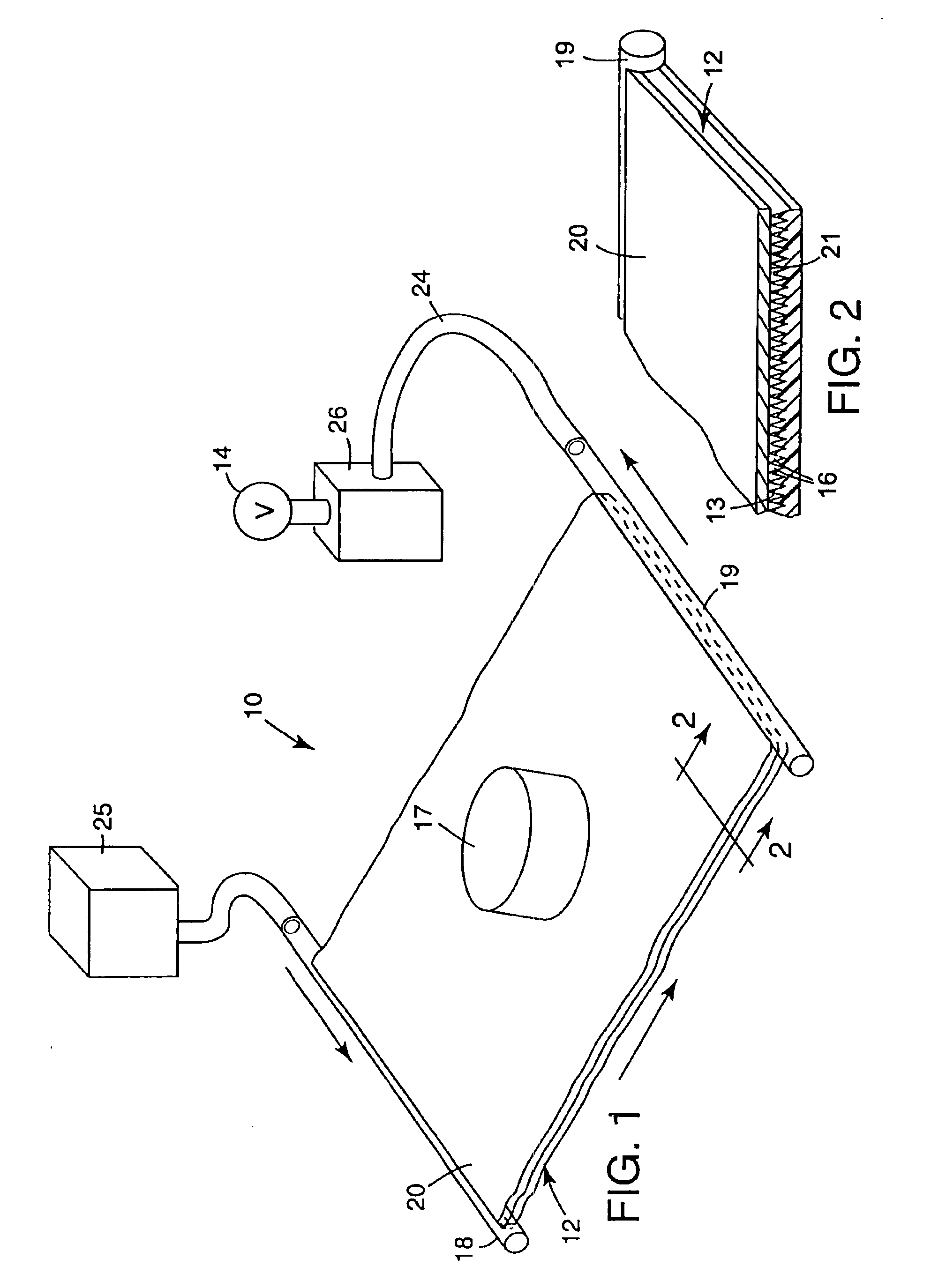Microchanneled active fluid heat exchanger
a technology of active fluid and microchannel, which is applied in the direction of contraceptive devices, light and heating apparatus, laminated elements, etc., can solve the problems of affecting the design of the fluid transport device, fiberglass and asbestos, and poor conductivity of cork, paper, etc., to reduce mixing or crossover, effective and efficient active fluid transport, and effective control of fluid flow through the device
- Summary
- Abstract
- Description
- Claims
- Application Information
AI Technical Summary
Benefits of technology
Problems solved by technology
Method used
Image
Examples
example
[0073]To determine the efficacy of an active fluid transport heat exchanger having a plurality of discrete flow passages defined by a layer having microchannels in a microstructured surface and a cover layer, a heating and cooling device was constructed using a capillary module formed from a microstructure-bearing film element, capped with a layer of metal foil. The microstructure-bearing film was formed by casting a molten polymer onto a microstructured nickel tool to form a continuous film with channels on one surface. The channels were formed in the continuous length of the cast film. The nickel casting tool was produced by shaping a smooth copper surface with diamond scoring tools to produce the desired structure followed by an electroless nickel plating step to form a nickel tool. The tool used to form the film produced a microstructured surface with abutted ‘V’ channels with a nominal depth of 459 μm and an opening width of 420 μm. This resulted in a channel, when closed with ...
PUM
| Property | Measurement | Unit |
|---|---|---|
| Length | aaaaa | aaaaa |
| Diameter | aaaaa | aaaaa |
| Diameter | aaaaa | aaaaa |
Abstract
Description
Claims
Application Information
 Login to View More
Login to View More - R&D
- Intellectual Property
- Life Sciences
- Materials
- Tech Scout
- Unparalleled Data Quality
- Higher Quality Content
- 60% Fewer Hallucinations
Browse by: Latest US Patents, China's latest patents, Technical Efficacy Thesaurus, Application Domain, Technology Topic, Popular Technical Reports.
© 2025 PatSnap. All rights reserved.Legal|Privacy policy|Modern Slavery Act Transparency Statement|Sitemap|About US| Contact US: help@patsnap.com



